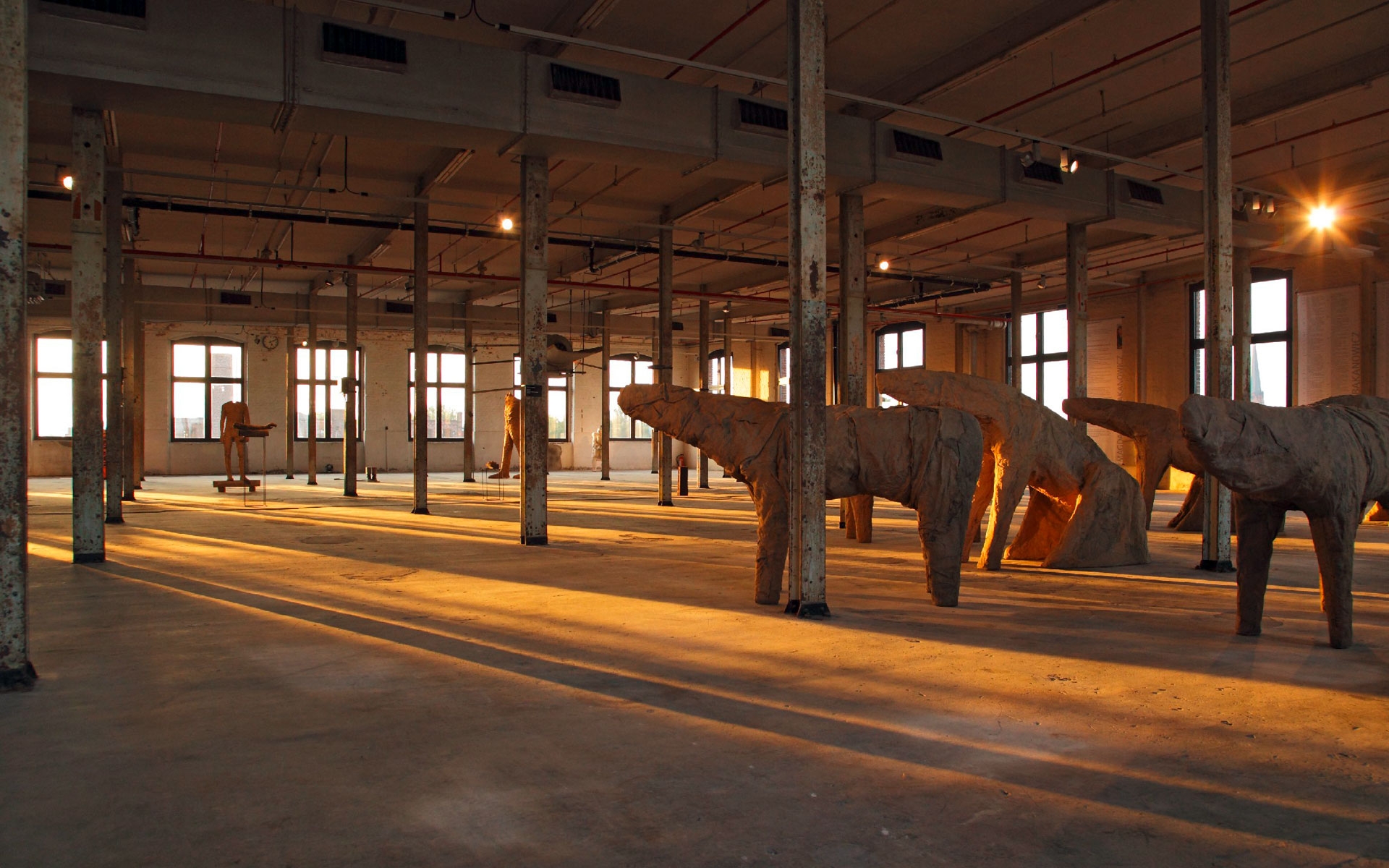PRESS RELEASE
31.08.2011
TextilWerk Bocholt
Historical spinning mill building – reanimated and reinvented
A subtle dialogue between historical structure and current architectonic accents is being offered at the former Herding spinning mill in Bocholt from 2nd September onwards. Having been renovated by ATELIER BRÜCKNER of Stuttgart on behalf of the Landschaftsverband Westfalen-Lippe (LWL = Regional Association of Westphalia-Lippe), the industrial monument has been reinvented for use as a cultural centre with a warehouse for shows, special exhibition areas, event spaces and catering. "Reanimate and reinvent" were the maxims of ATELIER BRÜCKNER. The architects thus underlined the original functional interrelationships of the factory by means of careful architectural surgery. The language of form and colour are derived from the old building structure.
A staircase which is accentuated with the colour red and was inserted into the 20 metre-long rope and pulley section of the former factory acts as the central means of access to the various parts of the building. In this way, the various parts of the facility are now opened up along the original energy axis: from the boiler house (for generating energy) to the machine house (for transforming energy into motion) and the rope and pulley section (for transmitting power) to the spacious spinning halls and the former technical control centre on the roof of the flat building (air extraction). This has now been replaced with an airy restaurant, whose front-hung facade, which is made of steel threads, continues the metaphoric reference to the former spinning mill. Inside the new glass cube, an installation composed of 88 ceiling lights from the 1950s is a reminder of this important phase in the history of the factory.
A dialogue between the present use and the retained historical features is developed on all five floors of the building complex with its 6,000 square metres of floor space. All the added fixtures and fittings are optically offset and add a time layer of equal value to the old still existing features, which can be experienced as historical markers with all the traces of their former use. The new functionally assigned sections such as the shop, the counter, the cloakroom, catering and WC areas have been added as independent elements. Their light-grey surface stands out from the heterogeneous surroundings, whereas their insides each display a colour that reflects their history: blue, red, green, white and black. The mobile furniture also makes use of these colours.
A total of 5.9 million euros was invested in renovation of the power systems and in upgrading of the building complex. It was erected in 1907 and – interrupted by the destruction of the Second World War and reconstruction in the 1950s – produced high-quality yarns up to 1973. As a logical consequence, the textile motif is also the leading theme of the cultural programme. When the building is opened as a cultural centre, the Regional Association will simultaneously be presenting the works of the artists Magdalena Abakanowicz and Laura Ford.

Photo: mac tanó

Photo: mac tanó

Photo: Martin Holtappels, LWL-Industriemuseum

Photo: Martin Holtappels, LWL-Industriemuseum

Photo: Martin Holtappels, LWL-Industriemuseum
CONTACT
ATELIER BRÜCKNER GmbH
Claudia Luxbacher
Press and Public Relations
T. +49 711 5000 77 126
F. +49 711 5000 77 22
presse(at)atelier-brueckner.com